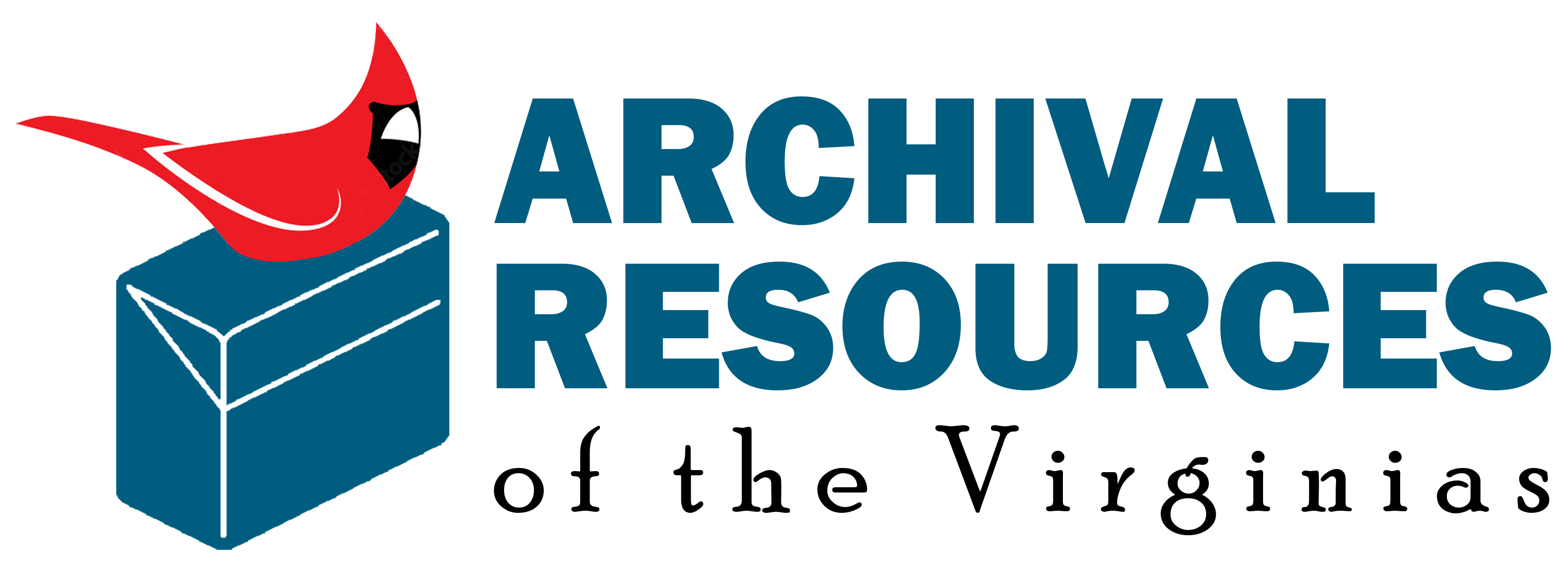- Repository:
- James Madison University Libraries Special Collections
- Published:
- 2010
- Subjects:
- Folklore -- Shenandoah River Valley (Va. and W. Va.) -- History | Ghost stories, American -- Shenandoah River Valley (Va. and W. Va.) -- History | Holidays -- Shenandoah River Valley (Va. and W. Va.) -- History | Traditional medicine -- Shenandoah River Valley (Va. and W. Va.) | Witchcraft -- Shenandoah River Valley (Va. and W. Va.) | Manners and customs -- Shenandoah River Valley (Va. and W. Va.)
ARVAS is an aggregator of archival resources. ARVAS does not have control of the descriptive language used in our members’ finding aids. Finding aids may contain historical terms and phrases, reflecting the shared attitudes and values of the community from which they were collected, but are offensive to modern readers. These include demeaning and dehumanizing references to race, ethnicity, and nationality; enslaved or free status; physical or mental ability; religion; sex; and sexual orientation and gender identity. Many institutions and organizations are in the process of reviewing and revising their descriptive language, with the intent to describe materials in more humanizing, inclusive, and harm-reductive ways. As members revise their descriptive language, their changes will eventually be reflected in their ARVAS finding aids
- Repository:
- James Madison University Libraries Special Collections
- Published:
- 2019
- Subjects:
- Mountain people -- Virginia -- Shenandoah National Park -- Social life and customs | Mountain life -- Shenandoah River Valley (Va. and W. Va.) | Folklore -- Virginia -- Rockingham County | Storytelling -- Virginia | Traditional medicine -- Shenandoah River Valley (Va. and W. Va.) | Superstition -- Shenandoah River Valley (Va. and W. Va.) | Superstition -- Virginia -- History
- Repository:
- James Madison University Libraries Special Collections
- Published:
- 2010
- Subjects:
- Cooking, American -- Shenandoah River Valley (Va. and W. Va.) | Holidays -- Shenandoah River Valley (Va. and W. Va.) | Vernacular architecture -- Shenandoah River Valley (Va. and W. Va.) | Pennsylvania Dutch -- Sources | Folklore -- Virginia -- Sources | Folklore -- West Virginia -- Sources | Folklore -- Pennsylvania -- Sources | Folk art -- Shenandoah River Valley (Va. and W. Va.) | Traditional medicine -- Shenandoah River Valley (Va. and W. Va.) | Spiritual healing -- Shenandoah River Valley (Va. and W. Va.) | Manners and customs -- Shenandoah River Valley (Va. and W. Va.) | Superstition -- Shenandoah River Valley (Va. and W. Va.) | Folk music -- Shenandoah River Valley (Va. and W. Va.) | Marriage customs and rites -- Shenandoah River Valley (Va. and W. Va.) | Funeral rites and ceremonies -- Shenandoah River Valley (Va. and W. Va.) | Mennonites -- Shenandoah River Valley (Va. and W. Va.) | West Virginia -- History
